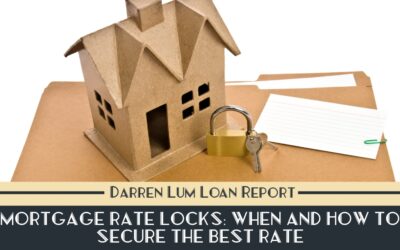Understanding the Distinction Between Mortgage Interest Rates and APR
Demystifying Mortgage Costs: Understanding Interest Rates and APR
When it comes to securing a mortgage, borrowers often encounter a maze of terms and numbers that can appear bewildering at first glance. Among the crucial factors that heavily influence the cost of a mortgage, two stand out: the interest rate and the APR (Annual Percentage Rate). While interconnected, it’s vital to grasp the distinction between them to empower yourself when comparing different loan options. This piece aims to illuminate the disparities between the mortgage interest rate and the APR, equipping borrowers with the confidence to navigate the mortgage landscape.
Unveiling the Mortgage Interest Rate
The mortgage interest rate constitutes the core percentage that lenders impose for lending money to borrowers. This rate is directly applied to the loan principal and determines the sum of interest the borrower will repay throughout the mortgage’s lifespan. For instance, if a borrower secures a $300,000 mortgage at a 5% interest rate, their first-year interest payment will amount to $15,000 (5% of $300,000).
Understanding APR (Annual Percentage Rate)
In contrast, the APR offers a wider lens on the overall mortgage expenditure. Presented as an annual percentage, it encompasses not only the interest rate but also additional expenses entailed in obtaining the loan. These supplementary charges could encompass:
- Loan Origination Fees: These are charges levied by the lender for processing the mortgage application.
- Points: Optional upfront fees paid to decrease the interest rate over the loan’s duration.
- Private Mortgage Insurance (PMI): Mandatory insurance for certain loans with a down payment below a specified threshold.
- Closing Costs: Fees associated with the mortgage’s closure, including appraisal fees, title fees, and attorney charges.
The APR furnishes borrowers with a holistic comprehension of the complete mortgage cost, simplifying the task of contrasting diverse loan propositions from multiple lenders. By factoring in the APR, borrowers can more effectively gauge the overarching financial ramifications of each mortgage alternative.
Deciphering Distinct Roles
The mortgage interest rate and the APR perform separate yet vital roles when evaluating mortgage options. While the interest rate signifies the expense of borrowing the principal sum, the APR presents an encompassing outlook on the total mortgage cost, incorporating added fees and costs. To make well-informed decisions aligning with their financial aspirations and circumstances, borrowers must meticulously weigh both figures.
Navigating the Path Ahead
It’s prudent for borrowers to invest time in scrutinizing assorted offers, affording attention to both the interest rate and the APR. This meticulous approach enables them to pinpoint the most fitting mortgage choice, ensuring a more secure and fiscally sound future.
Categories
- Around The Home
- Budget
- Credit
- Credit Scoring
- Credit:
- DSCR Loan
- Escrow Tips
- Federal Programs
- Federal Reserve
- Financial Reports
- Financing:
- Holiday Tips
- Home Buyer Tips
- Home Financing Tips
- Home Mortgage
- Home Mortgage
- Home Mortgage Tips
- Home Mortgages
- Home Renovation
- Home Seller Tips
- Home Tips
- Home Values
- Homebuyer Tips
- Homeowner Tips
- Investment Properties
- Just Closed
- Market Outlook
- Mortagage Tips
- Mortgage
- Mortgage Application
- Mortgage Rates
- Mortgage Tips
- Personal Finance
- Real Estate
- Real Estate Tips
- Taxes
- Uncategorized


